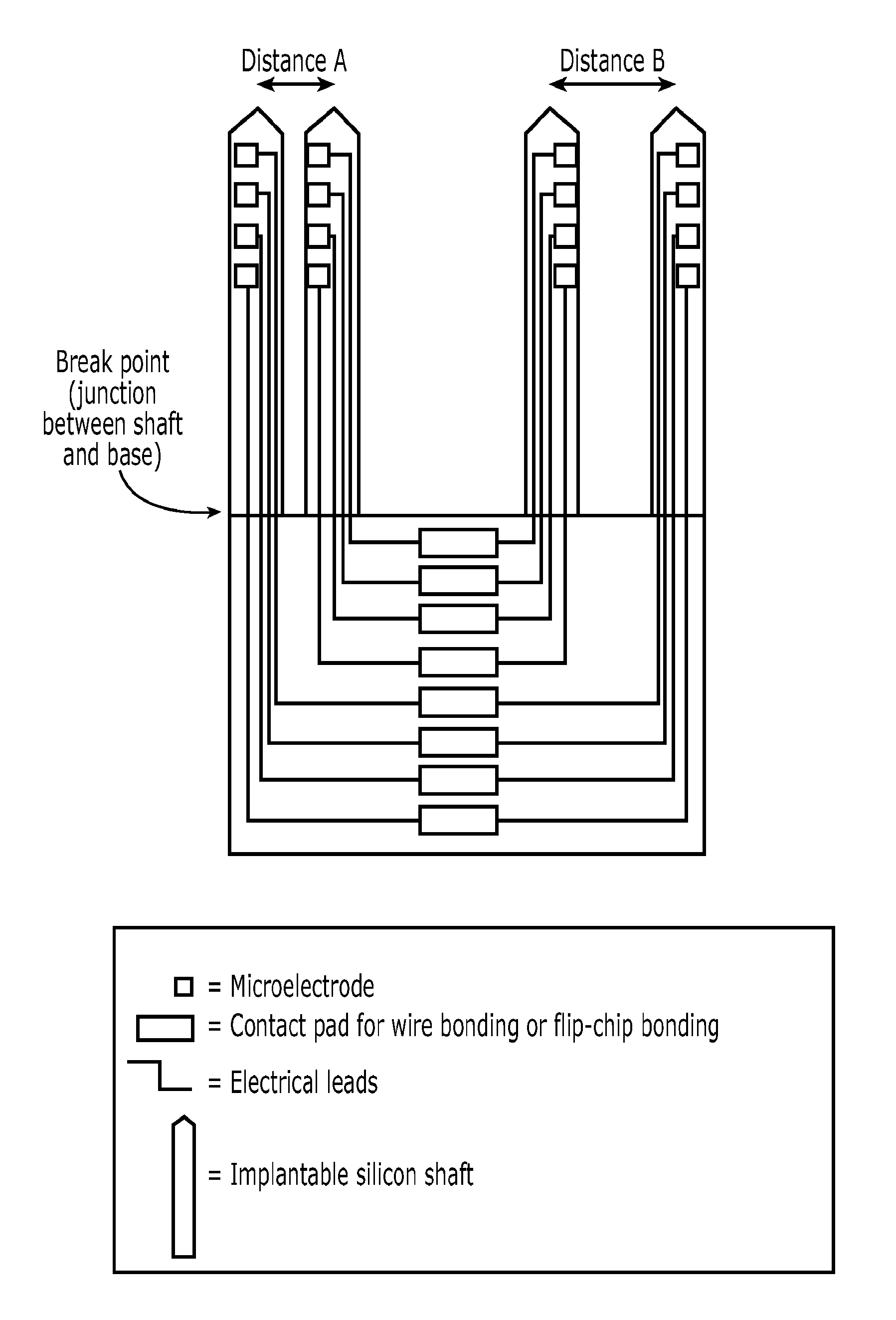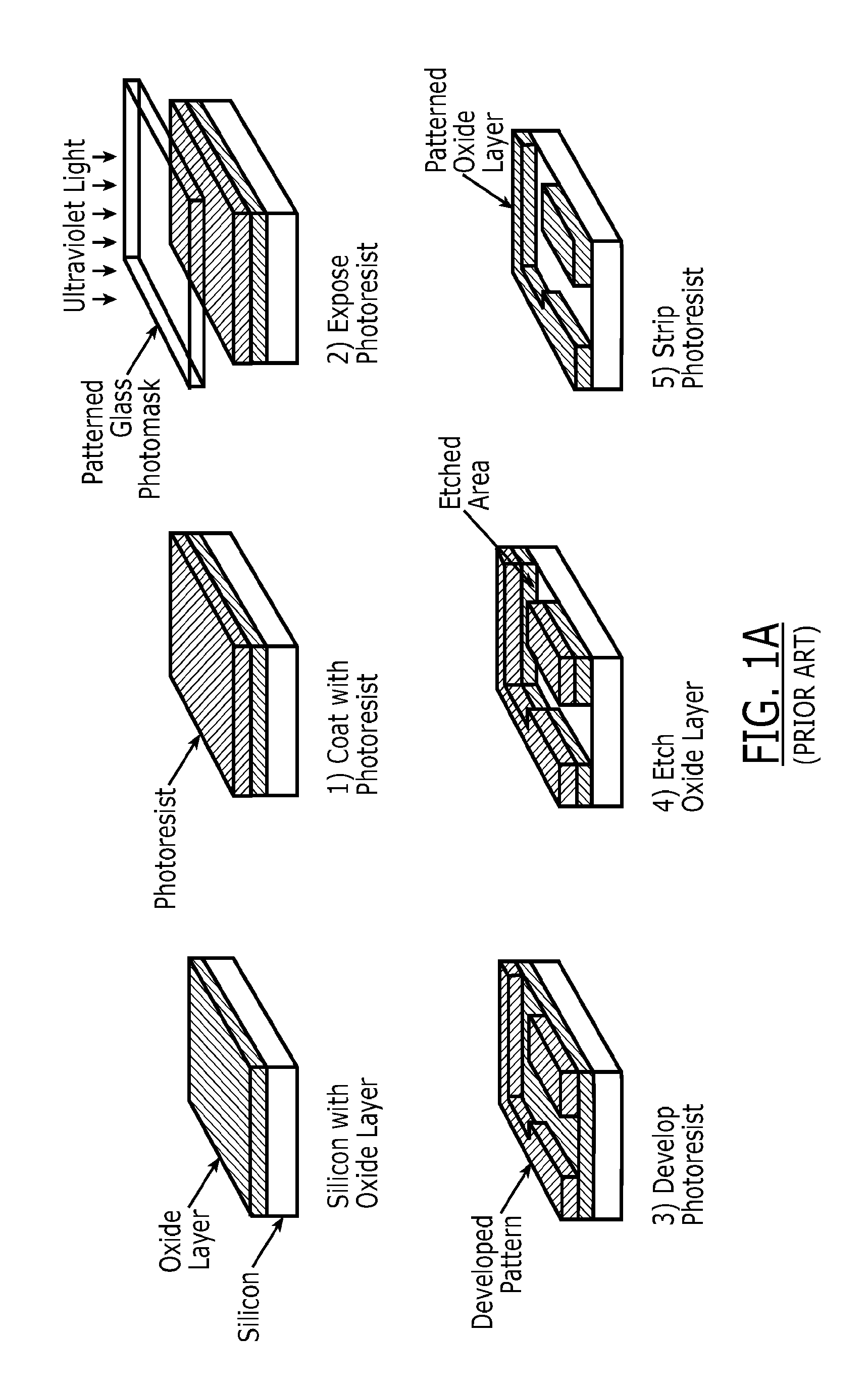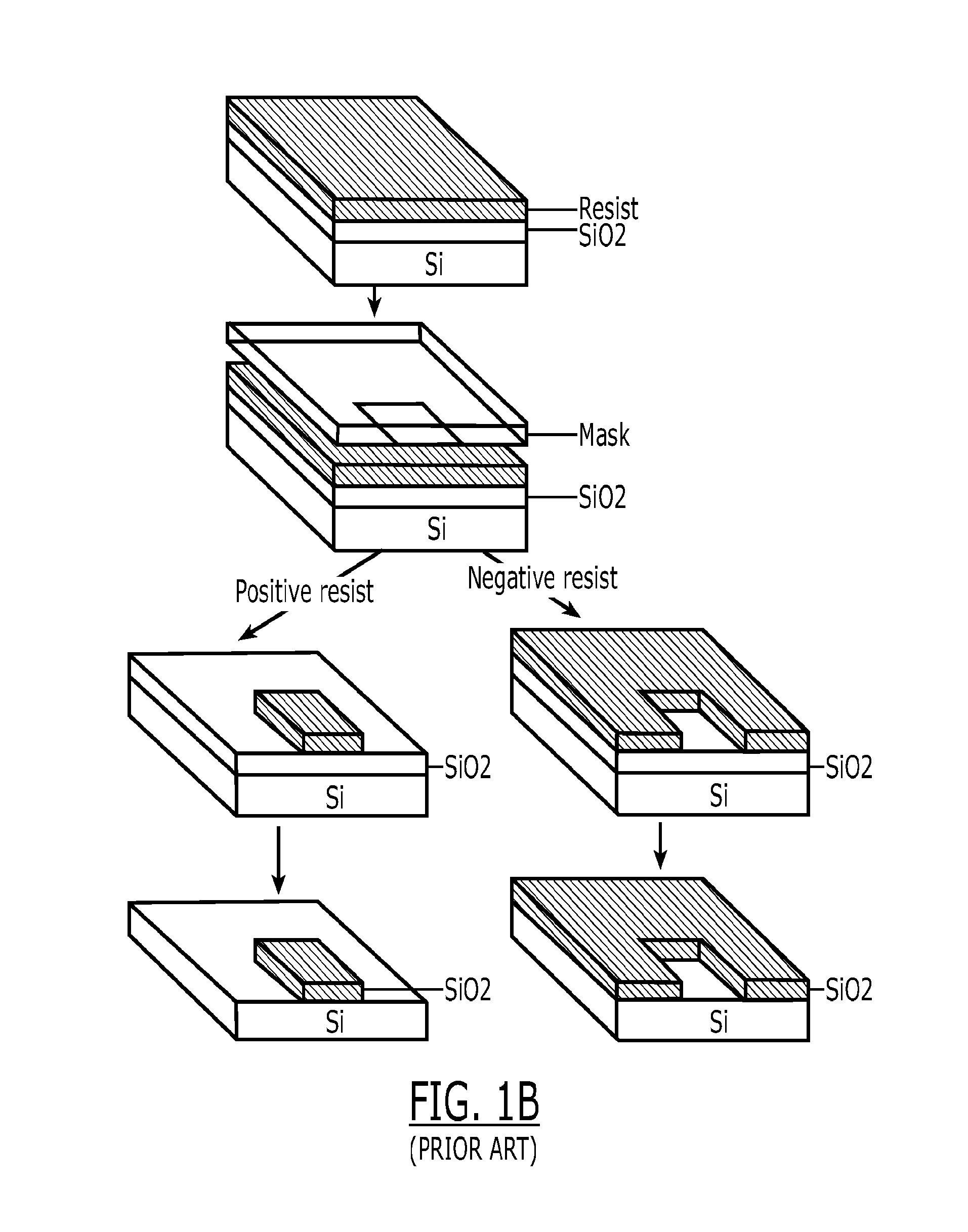Silicon microsystems for high-throughput analysis of neural circuit activity, method and process for making the same
a silicon microsystem and neural circuit technology, applied in the field of silicon microsystems, can solve the problems of high cost of silicon microfabrication process, inability to fully understand the neural circuit, and inability to use commercial neural probes, so as to reduce the cost of production, less complex, and less invasive neural interface
- Summary
- Abstract
- Description
- Claims
- Application Information
AI Technical Summary
Benefits of technology
Problems solved by technology
Method used
Image
Examples
example 1
Exemplary Manufacturing of a Neural Probe
[0118]FIG. 5 depicts a neural probe with two arrays of mirrored contact pads for wire bonding or flip-chip bonding. To each array of contact pads is attached an ASIC.
[0119]In this example, the neural probe depicted in FIG. 5 was manufactured according to processes and methods described herein.
[0120]Fabrication took place on a 150 mm (6 inch) square silicon-on-oxide (SOI) substrate. A stepper mask aligner with a module bearing a square or rectangular reticle design was used to repeat a square or rectangular reticle pattern across the wafer. The reticle contained patterns for multiple variants of neural probes. The silicon device layer or substrate have thickness ranging from 10-50 microns.
[0121]The process steps were carried out as follows:[0122](i) depositing a layer of stress-free or low stress silicon nitride (e.g., at a thickness of 0.5 to 2 microns) on the top side of a substrate;[0123](ii) blanket-depositing Titanium / Gold / Platinum or a s...
PUM
| Property | Measurement | Unit |
|---|---|---|
| thickness | aaaaa | aaaaa |
| thickness | aaaaa | aaaaa |
| thickness | aaaaa | aaaaa |
Abstract
Description
Claims
Application Information
 Login to View More
Login to View More - R&D
- Intellectual Property
- Life Sciences
- Materials
- Tech Scout
- Unparalleled Data Quality
- Higher Quality Content
- 60% Fewer Hallucinations
Browse by: Latest US Patents, China's latest patents, Technical Efficacy Thesaurus, Application Domain, Technology Topic, Popular Technical Reports.
© 2025 PatSnap. All rights reserved.Legal|Privacy policy|Modern Slavery Act Transparency Statement|Sitemap|About US| Contact US: help@patsnap.com



